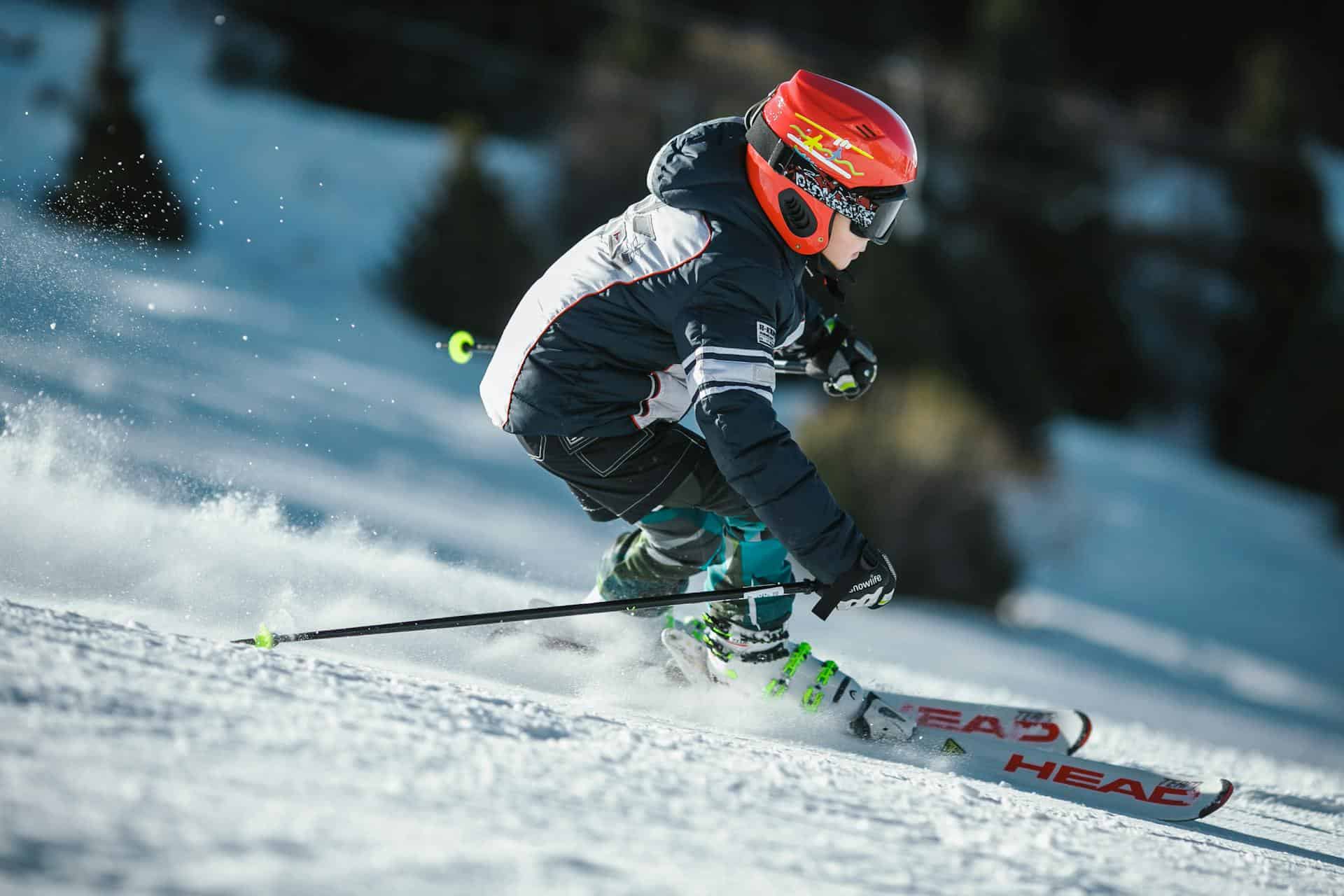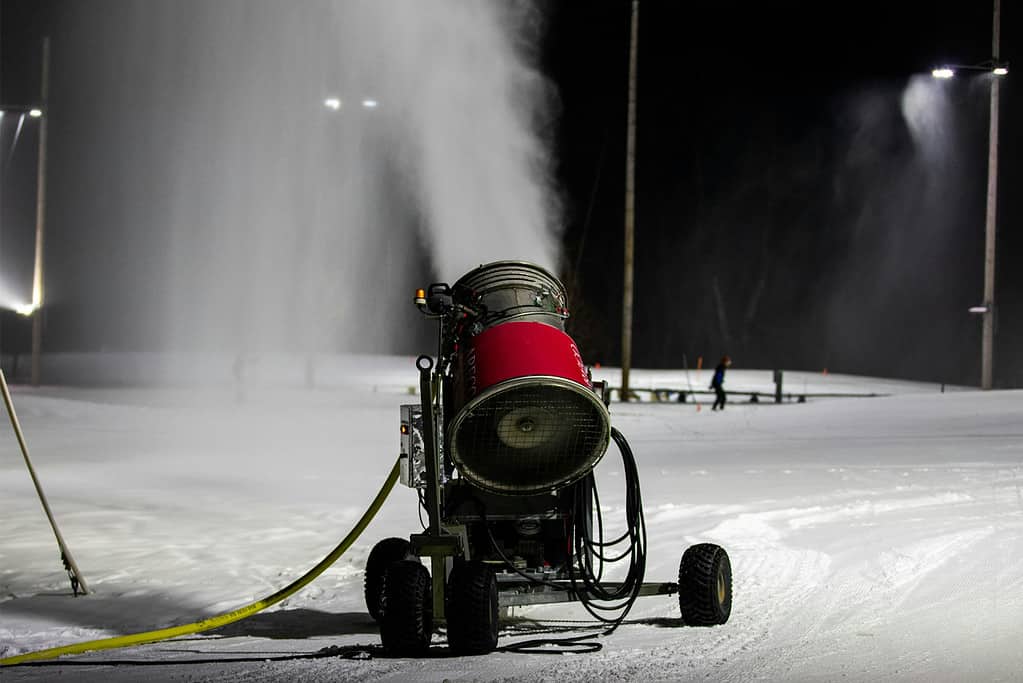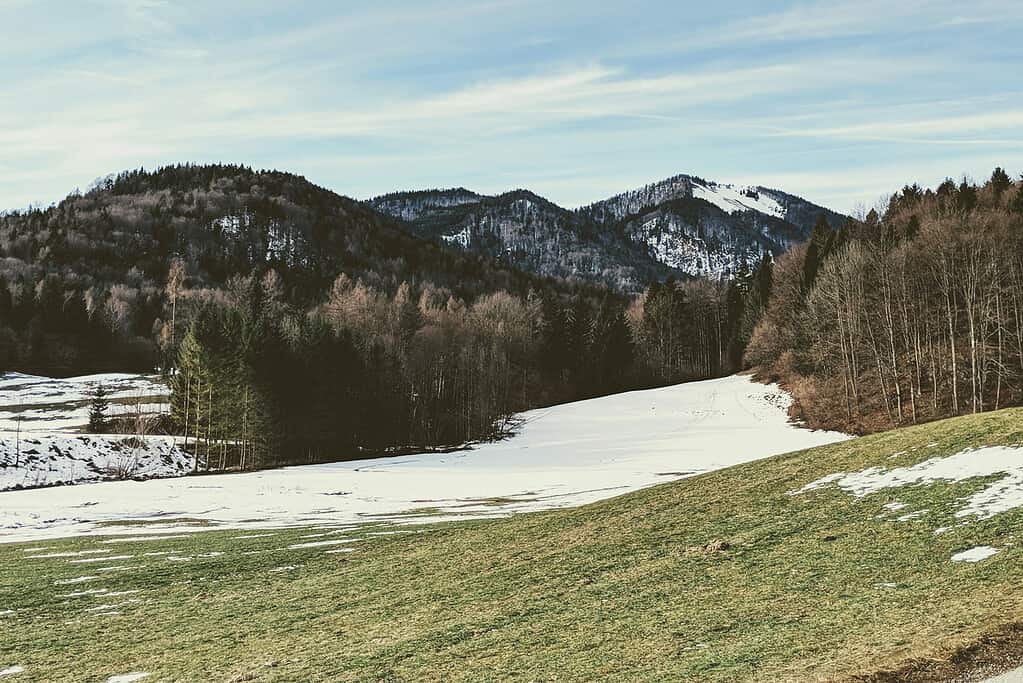Global warming is threatening ski resort business across the globe. In 2023, Europe and the U.S. witnessed the hottest winters on record, resulting in the early closure of many ski resorts. Similarly, in the US, ski season is now almost a week shorter compared to the early 2000s.

A study predicts that by 2050 ski season in the US may be 14 to 62 days (two months) shorter depending on the emission levels. This would make ski resorts economically unviable in many parts of the country.
Amid these challenging situations, artificial snowmaking has emerged as a savior for the ski industry. Currently, about 95 percent of all ski resorts in the world make their own snow to stay viable.
However, artificial snowmaking is an energy-intensive process, requires large volumes of water, and causes emissions.
“Ironically snowmaking adds more CO2 to the atmosphere and is making the climate problem worse,” Marie Cavitte, an expert on glaciers and climate change, told the BBC.
So can this solution work in the long term?
How do ski resorts produce artificial snow?
Snowfall occurs when the water vapors within the clouds freeze and turn into ice crystals. As the temperature drops further, these crystals stick to each other, grow larger, and form snowflakes.

Tiny snowflakes clump together and form heavier snowflakes that eventually fall under the influence of gravity, resulting in snowfall.
However, as our planet’s average temperature is crossing the 1.5-degree Celsius mark above the Industrial Age average, snowfall is becoming increasingly scarce with each passing year. For instance, between 1955 and 2022, snowpack in the western US fell by a staggering 23 percent.
The ski industry has been losing hundreds of millions of dollars in revenue due to the shortened snow season, leaving them no choice but to resort to artificial snowmaking.
The process involves pumping cold water (slightly above 0°C) into a snow gun or snow cannon at high pressure. The snow gun then sprays the water up in the sky up to a height of 35 feet (10 meters).
The gun also releases cold compressed air along with water. This air turns the water droplets into snow before they fall to the ground. The artificial snow is ready.
In optimal conditions, a snow cannon can spray 150 gallons (560 liters) of water per minute and produce big mounds of snow measuring 200 to 300 feet (60 to 90 meters) in diameter.
The process is highly dependent on natural conditions. It only works when the ambient temperature is below 37°C, air is cool and dry at 20 percent relative humidity. Otherwise, little or no snow will be produced.
The many problems with artificial snow
An average ski resort requires about 300 million liters of water to produce all the snow required during a ski season. This is roughly over 700 times the annual water consumption of an average household in the US.

According to an estimate, this substantial water demand of ski resorts is projected to increase by 80 percent in the next 70 to 80 years. This could lead to water shortage and water-related conflicts in areas where such resorts operate.
However, ski resorts need more than water to produce snow. They also require energy to power their snow guns and other equipment.
A study focusing on snowmaking-related energy consumption in Canada reveals that ski resorts in the country use 478,000 megawatt-hours of electricity annually. This much energy can power 17,000 homes for an entire year.
Moreover, artificial snowmaking in Canada alone adds over 130,000 tons of CO2 to Earth’s atmosphere every year. This emission contributes to further warming of the planet, reducing natural snowfall and making ski resorts more dependent on artificial snow.
“Operating snow guns takes energy. If that energy is fossil-fuel-based, which is highly likely, then making snow is contributing even further to energy-related emissions. Hence the very generation of artificial snow becomes part of the energy problem,” a report from the American Chemical Society stated.
What’s even worse is that the layers of artificial snow can harm plants, microbes, and the soil beneath them. This is because of the anti-freeze agents and various other chemicals used in the snowmaking process.
Also, artificial snow melts slowly compared to natural snow (because of its higher density). So it deprives plants of light and oxygen for prolonged durations. This delay also adversely affects the water table and biodiversity in a region.
There are some solutions, but are they enough?
Traditionally produced artificial snow harms the environment and is certainly not a sustainable solution. However, without snowmaking, a large number of ski resorts across the globe would shut down.

This would result in the downfall of a multibillion-dollar industry that employs thousands of people across the globe. For instance, a report suggests that as of 2023, there are over 80,000 employees in the ski and snowboard resorts in the US alone.
So is there a way resorts can continue to have enough snow for the ski season without harming the environment?
The short answer is yes and no because there are some promising solutions to the problem but none of them solve all the challenges associated with artificial snow. For instance, some resorts have begun to use solar and wind energy to power their snow guns.
These renewable sources have helped them reduce both their energy cost and emissions to some extent. However, wind and solar energy have a big upfront cost. Also even after bearing the cost, ski resorts still need traditional energy sources to continue their operations when there is not enough sunlight and wind, which is often the case in winter.
Another solution is to use UV-resistant blanket shields to cover the snow when the resort is closed. Such blankets can slow down snow melting by up to 70 percent. They can also reduce the water and energy consumption of ski resorts by decreasing their dependence on artificial snow.
However, in areas where natural snowfall is already scarce, you’d still have to employ artificial snowmaking. Some experts also warn that these snow shields may also release microplastics and other pollutants into the ground.
“When they take them (the blankets) off, there’s always pieces of plastic that are left behind which contaminate the glacier and surrounding land,” Cavitte said.
Researchers from the Barcelona Institute of Materials Science (ICMAB-CSIC) and FGC Turisme are currently working on a snowmaking technology that promises to produce artificial snow with fewer resources and at temperatures above 37°C.
During lab tests, they added a special mineral to water that allowed them to produce artificial snow at temperatures around one to 1.5 degrees higher than conventional methods and at 30 percent less cost.
The researchers claim that in the future their approach could enable ski resorts to use snow guns throughout the year. However, even this approach doesn’t promise a complete solution.
For instance, it’s still not clear whether the mineral will protect the soil and plant life from the chemical pollutants found in artificial snow. Plus, it will be another three years before the technique is ready for testing in real-world settings.
Unfortunately, for now, the future of ski resorts and our warming planet seems uncertain.


